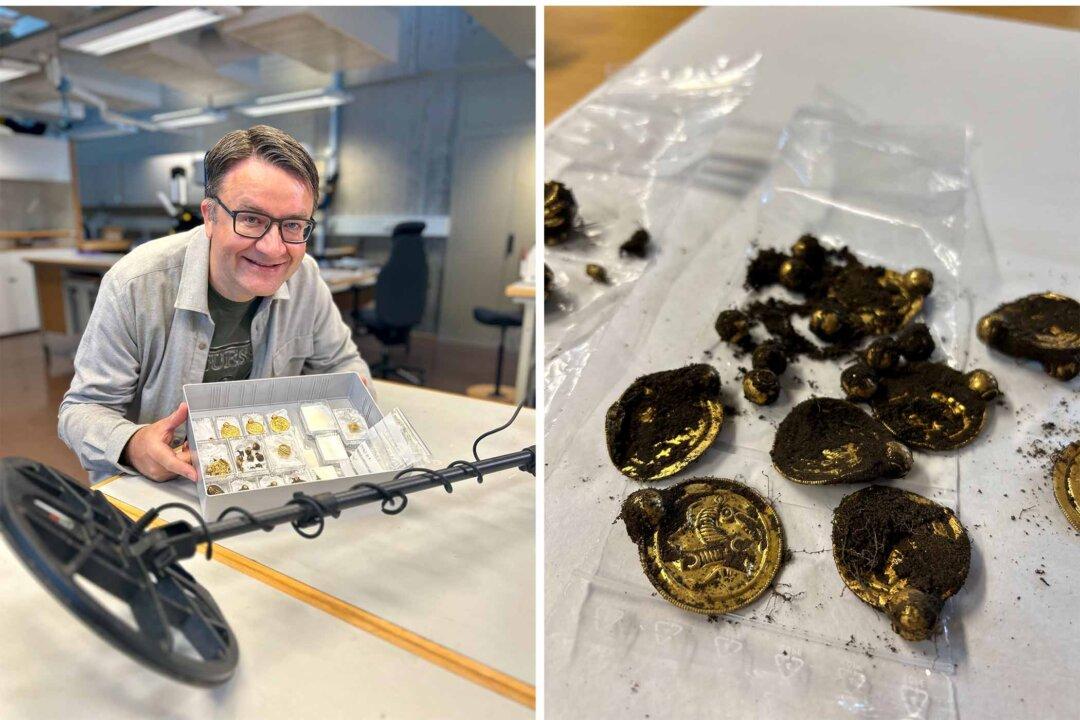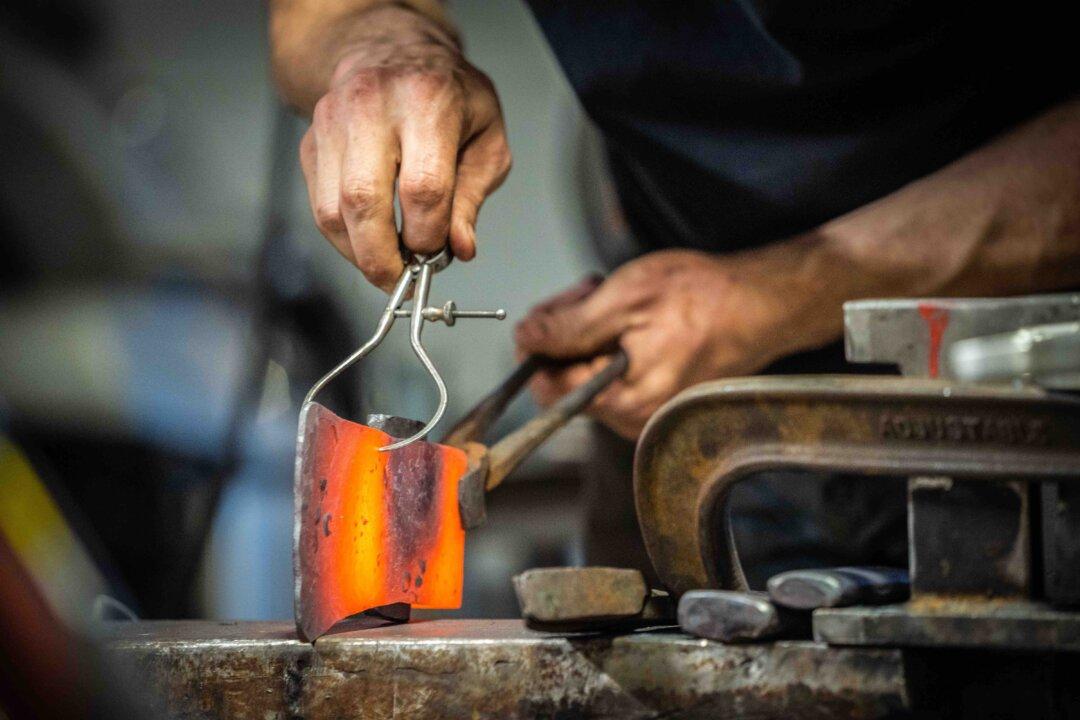A hobby metal detectorist out walking in Norway has discovered a spectacular treasure trove of gold jewelry, dating back to 500 A.D.
Erlend Bore, 51, had only just bought a metal detector after his doctor told him to get more exercise. He was out casually searching farmland, without much success, when instinct told him to explore slightly farther afield.






